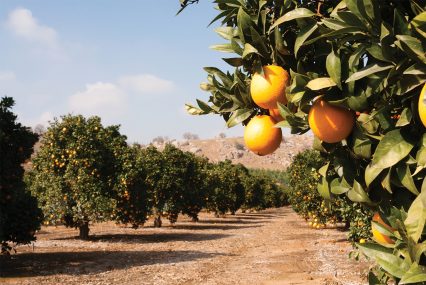
Price volatility in the agri sector has created the perfect environment for consolidation, but numerous uncertainties are slowing down the process in the Americas. Melodie Michel reports.
When rumours of Glencore Agriculture’s intention to combine with Bunge were confirmed on May 23, Bunge’s shares jumped by 16%. Markets were excited by the possibility of a takeover, after years of low prices and extreme competition shaved profits within agri companies. The deal is far from finalised, with Bunge insisting that talks haven’t even started yet, at the time of writing.
Still, something is brewing. Bunge’s CEO believes that consolidation “is becoming more obvious”, announcing the company’s first quarter results – an 80% drop in net profits – in early May, Soren Schroder opened the door to large-scale mergers and acquisitions in order to “create value for investors”.
Bunge recently hired JP Morgan and Shearman & Sterling as defence advisors in case Glencore decides to opt for a hostile takeover.
Meanwhile, Glencore CEO Ivan Glasenberg has alluded to the fact that even if the Bunge deal falls through, the company would expand its agri arm, particularly in the Americas.
“To really trade ag space, you need to be in all producing countries in the world so you can arbitrage your trading positions correctly. We always said we want to grow in those two geographies [the US and South America]. That’s why we made the approach to Bunge. It’s very big in America and big in South America so we believed it would have been a good fit,” he said at the St Petersburg International Economic Forum in June.
It is also worth noting that Glencore already tried to acquire Louis Dreyfus, another one of the so-called ‘ABCD’ of global grains trading (along with Archer Daniels Midland, Bunge and Cargill), in 2011, but the deal didn’t materialise.
One commodity trader, who agreed to speak to GTR on condition of anonymity, explains: “It’s very difficult to get into the US market without acquiring a company. So I think the main reason they want to combine with Bunge is to get into it. It’s also a way to balance risk. They are mainly an oil and metals company, so in some way they must be trying to hedge themselves, because they were in very bad shape two years ago. The commodity business is cyclical, so I think they’re just playing the game of the commodity sector.”
This wave of consolidation in the Americas agri sector started about two years ago, when Chinese state-owned commodity giant Cofco acquired Noble’s agribusiness as well as Brazilian grains and seeds company Nidera Sementes.
The truth is, bumper harvests of many grains and soybeans in recent years have cut margins significantly, and for some, the business is no longer worth the investment.
“It’s a very low-margin business with a high cost of capital. Noble sold the agribusiness because it was losing money for several years in a row in all its agri segments,” the trader adds.
But the world’s population continues to increase, and experts believe that global food production must increase by 60% to feed the expected 9 billion humans who will inhabit the planet by 2050. Some companies, particularly Asian ones, are betting on North and South America’s plentiful resources. On top of its recent acquisitions and opening of a new office in Canada, Cofco also (unsuccessfully) tried to take over two Colombian food production companies. The Chinese firm’s president, Yu Xubo, has been talking about its expansion plans in the Americas as “aggressive”.
Japan’s Marubeni has also been investing more on the continent, with the purchase of US grain handler Gavilon in 2012.
“The volatility with respect to commodities is starting to stabilise. The long-term view is that food prices will increase. In fact, financiers are looking for this type of deal, with very competitive interest rates,” says Sebastian Resano, vice-president of business development in Latin America for Kynetix, a solutions provider bringing blockchain technology to the commodity world, and working with a variety of commodity exchanges in Latin America.
Moving up the value chain
One thing that makes Latin America, in particular, attractive to agribusiness corporations is a trend towards offering more value-added products. “In soft commodities, there’s a trend for specialisation, for example producing the specific type of corn needed to make popcorn, to target new markets. The idea is to get higher margins. We see this for corn and peanuts in Argentina. In fact, Argentina is now focused on moving from being the granary of the world to being the supermarket of the world. Instead of just exporting wheat, how about exporting spaghetti?” Resano tells GTR.
For example, in mid-2016, farm group Los Grobo – whose motto is, rather aptly, ‘Together we add value’ – announced an intention to invest US$100mn in Argentina in the coming years, particularly in research and development, as well as services. The company produces flour and dry pasta in its Argentinean manufacturing facilities.
Argentina, in particular, has become particularly attractive to foreign investors since President Mauricio Macri lifted disputed export controls in grain and beef soon after being sworn into power in late 2015, creating opportunities in the market. Due to recent investments in crop technology, grain crops are expected to hit a new record of 17.5 million tonnes in Argentina in 2017/18, compared to 16.3 million tonnes in 2016/17.
But a quick look at the Latin American Private Equity and Venture Capital Association’s (Lavca) newsfeed shows how trendy agribusiness technology is across the region: since the start of 2017, start-ups and funds specialised in improving efficiency in the sector have received close to US$700mn in private investment.
In the meat sector too, South American producers are investing in efficiency, moving cattle from farms to feedlots, which allows for better control and flexibility. This is a technique that has been used for decades in the US, where the industry is currently thriving: the country has just become the world’s largest beef exporter, with impressive growth in sales to Japan, Mexico, South Korea and Canada. The US meat industry recently regained access to Brazil after years of interruption due to a mad cow outbreak in 2004. And it is soon expected to get a much larger boon in the lifting of a similar import ban in meat-hungry China.
But those ready to invest in American food commodities need to prepare for a number of obstacles, not least of which is the renegotiation of the North American Free Trade Agreement (Nafta).
Nafta headaches
For most agri producers in North and South America, the renegotiation of the agreement is seen as negative, mainly because it is creating so much uncertainty. After a meeting with US trade representative Robert Lighthizer and USDA secretary Sonny Perdue in May, US house agriculture chairman Mike Conaway told reporters: “Even the idea of renegotiating Nafta is unsettling because no one likes change. Under the best of circumstances, it would make folks nervous or unsettled until we get it done. Time is of the essence and the quicker we get it done, the better all of our exports will be.”
Whether or not US exports will benefit after the renegotiation remains to be seen, as a tough stance on manufacturing imports from Mexico risks retaliation in the agricultural sector, as Mexico buys about US$19bn-worth of commodities from the US every year.
In fact, Mexico is already looking at other markets to fill its agri demand. The country’s livestock producers this year negotiated a deal with Brazilian yellow corn exporters to bring the price of the commodity closer to that of the US, and expect to partly move their purchases as a result.
Higher prices (about US$15 more than US corn, per tonne) and longer shipping times have limited Mexican imports from Brazil so far, but in two 30,000-tonne shipments set to be delivered in August, Mexico managed to bring the price down to only US$3 to US$5 higher than it would cost to import it from the US. The country has agreed to import a total of 300,000 tonnes of corn from Brazil this year at the same price – a drop in the 12.75 million tonne ocean Mexico buys from the US each year, but a record volume nonetheless. More importantly, opening up horizons will give the Latin country more leverage in the upcoming Nafta talks.
US corn producers have urged caution in the renegotiation of the agreement, and reiterated the importance of Mexico – the largest export market for US corn – for the industry.
Another sector that could be impacted by the discussions is sugar. There are minimum prices on US imports of Mexican raw and refined sugar, but US refiners argue that Mexican producers are going around the agreements by exporting product that is technically raw but needs no further refinement. This, according to them, has resulted in a shortage of raw sugar and pressured prices on refined sugar. The US is pushing Mexico to make a new agreement, but American lawmakers are worried that any change could result not only in price increases for consumers, but also for manufacturers who use sugar as a main ingredient.
A group of 10 senators warned US commerce secretary Wilbur Ross in May that any imposed price controls “would ultimately raise prices for American families and threaten US jobs in the food manufacturing industry”. “It is imperative that any trade agreements must ease the current price restrictions on Mexican sugar imports and provide financial relief for American consumers who lose out under this protectionist policy,” the senators added.
Political uncertainty
Nafta’s renegotiation may not even be the biggest concern on commodity players’ minds: they are likely to be losing more sleep over the region’s political risks. It is hoped that food production will be Brazil’s saving grace in these troubled times – the country is still struggling to get out of a two-plus-year recession, its worst in history. But not a day goes by without more discoveries of corruption and mismanagement as part of Brazil’s Car Wash investigation, all of which are affecting the economy’s recovery and investors’ risk appetite.
Cofco is facing problems with Nidera in Brazil, where accounting irregularities, coupled with low profitability, led to a US$54.8mn hit on equity in both 2014 and 2015. As a result, the company is reshuffling management, and sold its sorghum (a cereal grain) operations to US specialist company Chromatix in May.
Argentina recently allowed foreign firms and individuals to own rural land as part of Macri’s liberalisation efforts, and a similar law is being considered by President Michel Temer in Brazil. But both presidents are facing strong popular discontent, and it is not unlikely that socialist candidates could win the upcoming presidential elections (in 2018 in Brazil, 2019 in Argentina), potentially reversing such reforms.
This could be why Glencore is so desperate to buy a trader with a strong US presence: despite recent concerns over President Donald Trump’s protectionist rhetoric, the country appears as a safe investment haven compared to its southern neighbours.
“They’re probably also betting on what Trump can do, the protectionism which will probably benefit US farmers. The US is such a huge market that they just want to be a part of that. Farmers in the US are protected, have subsidies, and the market is growing every year,” the unnamed commodity trader says.











